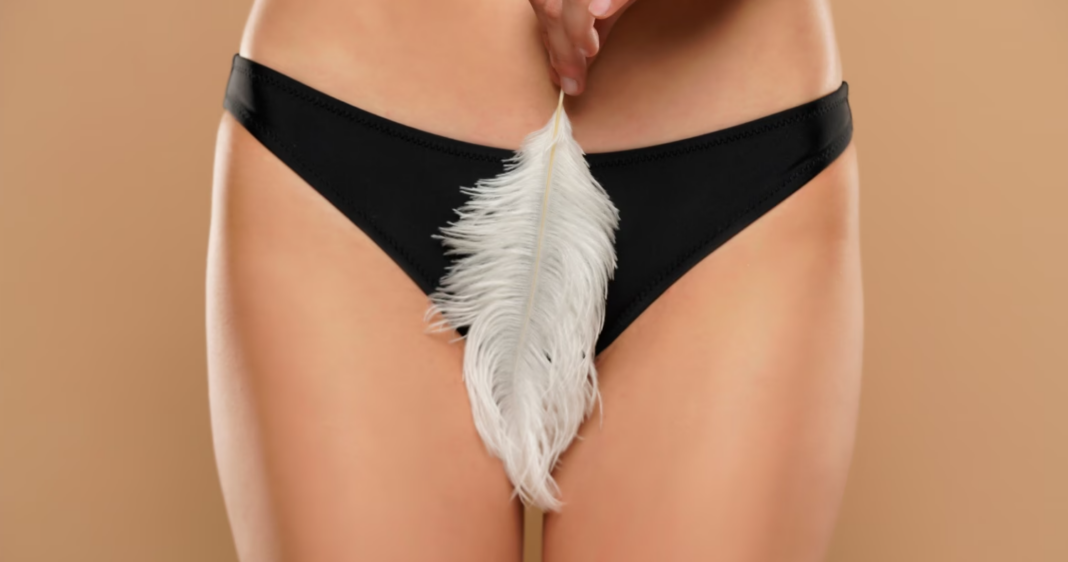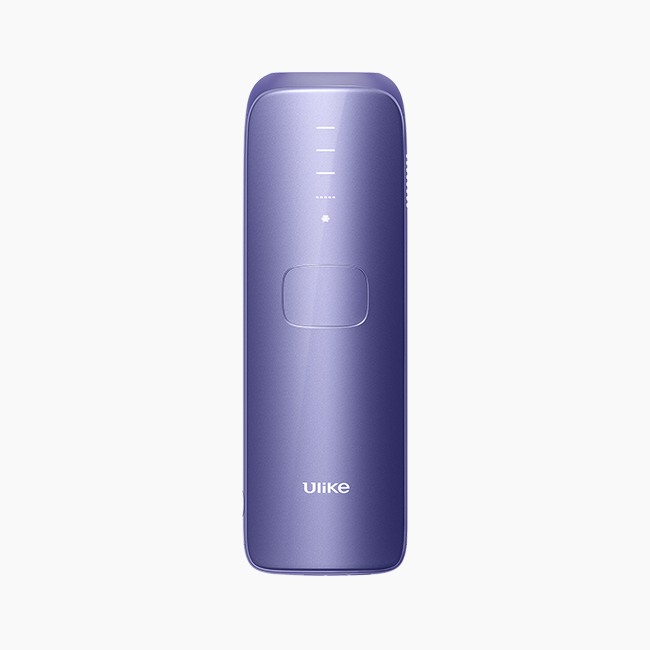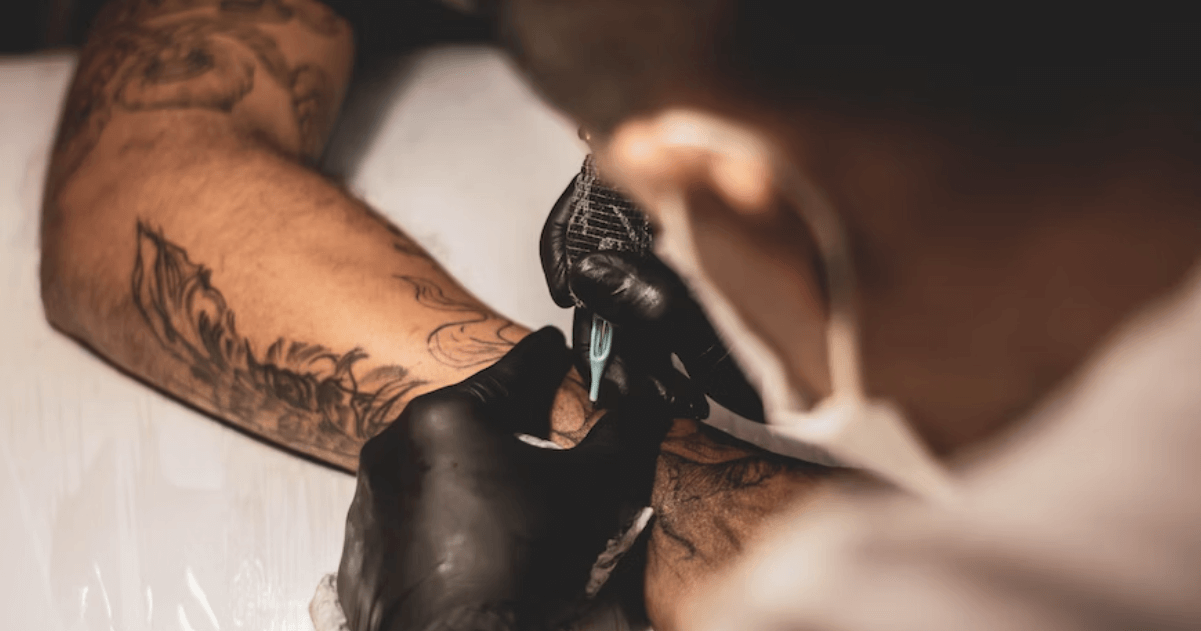
Introduction
For a fact, the way you want your pubic hair is your choice to make. While cultural standards may have in one way blurred that line, it still boils down to your preference to decide to either grow or shave off your pubic hair.
Some may decide to go all-natural and leave it to grow, some may decide to keep the hair well-trimmed and groomed, and, of course, there is the option of having a completely hairless and clean private part.
Whatever decision you make for your pubes is just fine, because, at the end of the day, it’s your body and your choice, as long as you keep them clean always. Keeping your pubic hair also has its benefits, which include, acting as a lubricant, regulating temperature, offering protection against genital warts, and increasing body sensation, among others[1].
Moreso, pubic hair removal has been associated with different benefits, such as maintaining hygiene, better sexual experience, and more comfortable menstruation, amongst many others[2].
Apparently, whatever you decide is just fine. However, if you are going to keep a clean shave, it is important you do it right and that is what we will talk about in this article.
We will explore different home remedies to remove pubic hair without the risk of any infection or injury, and some professional ways to get it done easily and safely. Let’s get right to it.
Home Remedies for Removing Pubic Hair
To be clear, removing your pubic hair professional is your best option to maintain safety and hygiene. However, the following options will also get the job done safely.
Try Using Scissors
 Scissors are good options to remove your pubic hair. They don’t come in contact with your skin, and hence, there is a reduced risk of getting yourself injured down there. And if you use new scissors, which you should, the risk of infection or transferring bacteria to your pubes is significantly decreased.
Scissors are good options to remove your pubic hair. They don’t come in contact with your skin, and hence, there is a reduced risk of getting yourself injured down there. And if you use new scissors, which you should, the risk of infection or transferring bacteria to your pubes is significantly decreased.
To get the best results, here are a few tips to ensure:
- Ensure you use new and sharp scissors, to prevent hair from getting tugged in between the blades.
- For convenience, try sitting down while trimming.
- Also, try getting a handheld mirror while trimming to get a better view of areas that are harder to reach. You could place the mirror between your legs strategically to view your pubes.
- Ensure where you are trimming is well illuminated to easily see what you are doing, and prevent injuries.
Scissors, as we already implied, are a good way to maintain well-trimmed and groomed pubic hair. However, you will have to do this regularly as this option offers no long-lasting option to achieving well-trimmed pubic hair.
IPL Hair Removal
 IPL device is another easy home remedy you can explore to get rid of your pubic hair. This is quite an easy and effective method of hair removal as it involves using a light-based hair removal device to remove hair and slow down regrowth significantly, leading to many weeks before going for another session.
IPL device is another easy home remedy you can explore to get rid of your pubic hair. This is quite an easy and effective method of hair removal as it involves using a light-based hair removal device to remove hair and slow down regrowth significantly, leading to many weeks before going for another session.
IPL works by focusing an intense beam of light on the hairy area, heating the follicles up, and then destroying the surrounding cells responsible for hair growth. IPL is safe, with a reduced risk of infections, and leaves no pain or irritation.
Shaving
 Another option to remove pubic hair in the confines of your home is shaving. Shaving, if done properly, gives you a cleaner private part than trimming. Shaving is faster and pain-free, especially if you do it correctly[3]. However, because you are using a razor, which comes directly in contact with your skin, you may sometimes experience redness, irritation, or itching.
Another option to remove pubic hair in the confines of your home is shaving. Shaving, if done properly, gives you a cleaner private part than trimming. Shaving is faster and pain-free, especially if you do it correctly[3]. However, because you are using a razor, which comes directly in contact with your skin, you may sometimes experience redness, irritation, or itching.
Moreso, there is an increased risk of infections, especially if you are sharing or reusing a razor. You should also be careful not to cut yourself while shaving your pubes, as the skin around that area is very smooth and thin. Overall, shaving offers hair removal from the base itself, thereby providing a clean and smooth look with no hair stubble.
Hair Removal Creams
 Hair removal creams have become one of the most preferred options for removing hair from private parts in recent times. Thanks to the chemicals contained in the creams, they soften the hair from the base and make it easy to wipe off after some minutes of application.
Hair removal creams have become one of the most preferred options for removing hair from private parts in recent times. Thanks to the chemicals contained in the creams, they soften the hair from the base and make it easy to wipe off after some minutes of application.
Hair removal creams are very affordable and accessible, you can find them at the local stores, or sometimes at the pharmacy. They provide a longer-lasting hair solution than shaving or trimming. There is also little to no risk of infection, they are nearly painless and don’t cause any irritation.
However, because of the chemicals contained in these hair removal creams, some may be allergic[4]. Hence, before applying it on your pubes, ensure you rub a little portion on your elbow or any small area of the skin to confirm if there will be any reaction. If there is any sign, including pain, irritation, redness, or inflammation, that’s your cue; do not apply on your private areas. No sign is a small sign, don’t forget.
Tweezing
 You must have heard of tweezing. Many women use tweezing to remove hair from their brows. Well, the good news is you can also use this method to remove hair from your private region. You may experience a little sharp pain and irritation while tweezing, as it works by removing hair from the base. Moreover, if your pubes are quite fully grown, this may not be the best option to remove them.
You must have heard of tweezing. Many women use tweezing to remove hair from their brows. Well, the good news is you can also use this method to remove hair from your private region. You may experience a little sharp pain and irritation while tweezing, as it works by removing hair from the base. Moreover, if your pubes are quite fully grown, this may not be the best option to remove them.
In general, tweezing is another way to remove hair from your private regions, especially when the strands of hair are sparse and few.
Epilators
 Epilators are small handheld devices that remove hair from the base. They are available at local stores and can be used from the comfort of your home anytime. With epilators, you just have to hold it gently over the area and allow it to pluck out the hair[5].
Epilators are small handheld devices that remove hair from the base. They are available at local stores and can be used from the comfort of your home anytime. With epilators, you just have to hold it gently over the area and allow it to pluck out the hair[5].
Also, ensure you exfoliate before using this device to prevent ingrown hair. There are different epilators, opt for the one that works well for fine and soft hair and is designed for private regions.
Epilators can leave you with some pain that should fade off after some minutes of usage. Overall, this is another option to get rid of unwanted pubes with little to no risk of infection.
There you have some options you can explore at home to get rid of pubic hair. One major downside to these options is that they don’t provide a lasting solution to pubic hair, which means you have to keep doing them regularly.
If you are the type that prefers removing pubic hair once and for all, then you may want to consider some professional options. Below are a few that you can choose from.
Professional Options for Pubic Hair Removal
Waxing
 While there are available waxing strips that may also be used at home, employing the services of an expert is your most reliable and safe option for removing pubic hairs. Professionals can help you remove hair from difficult regions[6].
While there are available waxing strips that may also be used at home, employing the services of an expert is your most reliable and safe option for removing pubic hairs. Professionals can help you remove hair from difficult regions[6].
Waxing is a very painful method, in fact, more painful than other methods of pubic hair removal. This is because the pubic region is sensitive, and pulling hair abruptly from there can result in some amount of pain. In fact, if not carefully done, pulling hair from the follicles can cause infection. That explains another reason you need the services of a professional.
The upside to this is that the solution is long-lasting, at least longer than any of the home remedies discussed above. Also, it is the cheapest of all the professional methods of pubic hair removal. Many beauty parlors offer waxing professionally, and you may even get a professional for the same experience.
Laser Hair Removal
 Laser hair treatment is a more sophisticated way to remove pubic hair. This method provides a long-lasting solution to pubic hair growth by destroying the hair follicles and slowing down hair regrowth significantly[7].
Laser hair treatment is a more sophisticated way to remove pubic hair. This method provides a long-lasting solution to pubic hair growth by destroying the hair follicles and slowing down hair regrowth significantly[7].
This treatment is done by a professional and in a professional setting. Moreso, it’s not a one-off treatment. You will have to go back for follow-ups after some weeks, as specified by the professional until the desired result is achieved.
Electrolysis
 Just like laser hair treatments, an electrolysis method of hair removal is done by an expert in a professional setting. This procedure makes use of radio waves to remove and prevent hair growth, by disturbing the hair follicles[8].
Just like laser hair treatments, an electrolysis method of hair removal is done by an expert in a professional setting. This procedure makes use of radio waves to remove and prevent hair growth, by disturbing the hair follicles[8].
A session of electrolysis hair removal may range from 30-60 minutes because this process targets one hair follicle at a time. Follow-up sessions may be needed to maintain a hairless and clean pubic region for a long period.
These are some professional ways you can explore to remove pubic hair with lasting results. However, as beautiful as removing pubic hair, there are some risks and side effects to it. Let’s discuss that briefly.
Risks of Removing Pubic Hair
To be clear, removing hair from your pubic region is not unhealthy and in fact, does not predispose you to any diseases or disorders. However, the process and method of removing hair can be quite risky, especially if not done aseptically and correctly.
To begin with, for home remedies, the safest way probably is by using scissors, since they don’t come in contact with your skin directly. Other methods can result in some minor, and maybe severe, conditions, such as;
- Itchiness when the hair grows back
- Breaks or cuts in the skin
- Irritation
- Redness or inflammation
- Ingrown hair
- Folliculitis (inflammation of hair follicles)
- Allergic reactions (from chemicals in hair creams)
The development of boils in pubic regions, which may be filled with pus, can also result from removing hair from the pubic hair region[9]. This may be treated by applying some topical antibacterial creams, and some cold press.
There is almost no risk of infection for professional pubic hair removal because proper measures are put in place to ensure the safety of the patients, and there is aftercare treatment, too.
General Safety Measures
There are simple measures you can put in place to significantly reduce the chances of infection, especially if you are sticking with any of the home remedies.
- Start by gently cleaning your private region with warm water and soap, to prevent the spread of bacteria, before starting any hair removal method. This is very important.
- Preferably, use new scissors, razors, or any other hair removal devices. If you are reusing them, properly disinfect them before using them in your private area.
- Change hair removal tools and devices regularly to maintain sharpness and hygiene.
- Don’t use the scissors or razors you use in your public area for another purpose, not even for removing hair from different parts of your body. Get separate tools for your pubic region and another set of tools for other parts of the body.
- Also, lather and moisten your skin when shaving your pubic region. You could do that with soap or shaving gel, just to allow your tool to move easily over your skin.
- To reduce irritation, trim in the direction of hair growth. It also gives a cleaner look.
- After shaving, waxing, or trimming, moisturize your pubic region. It helps to soothe irritated skin. Unscented lotion or oil are some options you can consider.
- Finally, after shaving, you need to allow some fresh air in your private region. Don’t wear tight clothes or underwear that will put pressure on your shaved pubic area and worsen irritation.
Following these guidelines will reduce the risk of infection and foster safe pubic hair removal. However, if you notice anything outside the minor conditions that we have discussed, visit your doctor immediately for proper medical attention.
Now, let’s answer some of your questions.
FAQs
Is It Good to Remove Pubic Hair?
Although keeping pubic hair has its benefits, which we have mentioned earlier, removing it is not bad. It’s all about preferences, as long as you employ safe removal methods, you’re good.
So, the real question here is “Do you want to keep or remove your pubic hair?”. That’s your decision to make.
How Can I Remove My Pubic Hair Without Shaving?
You can remove pubic hair by tweezing, waxing, trimming, or using hair removal cream creams, or epilators. Laser treatment and electrolysis are some of the professional ways to remove pubic hair.
Does Turmeric Remove Pubic Hair?
Yes, turmeric can help with removing pubic hair. Turmeric contains certain chemicals that soften hair bases and facilitate easy removal. It also prevents hair growth[10]. Sadly, turmeric is very slow and not effective. Hence, other options already discussed are better.
Conclusion
Pubic hair removal can be done in different ways, including waxing, shaving, laser treatments, etc. Provided you follow our safety guidelines, these methods are safe and effective. No worries about the risk of infections or side effects, except for some minor pain and irritation that fade off after some minutes.
However, professional methods are the best way to remove pubic hair. They are done by dermatologists and they put measures in place to ensure safety.
In conclusion, if you fancy clean and hairless pubic regions, then these methods will help you get that.
References
- Butler, S. M., Smith, N. K., Collazo, E., Caltabiano, L., & Herbenick, D. (2015). Pubic hair preferences, reasons for removal, and associated genital symptoms: comparisons between men and women. The journal of sexual medicine, 12(1), 48–58. https://doi.org/10.1111/jsm.12763
- Obst, P., White, K., & Matthews, E. (2019). A full Brazilian or all-natural: understanding the influences on young women’s decision to remove their pubic hair. BMC women’s health, 19(1), 164. https://doi.org/10.1186/s12905-019-0868-1
- Tanner, J., & Melen, K. (2021). Preoperative hair removal to reduce surgical site infection. The Cochrane database of systematic reviews, 8(8), CD004122. https://doi.org/10.1002/14651858.CD004122.pub5.
- Nanyan P. (2019). Fragrance Allergens in Hair Removal Cosmetic Products. Dermatitis: contact, atopic, occupational, drug, 30(4), 268–271. https://doi.org/10.1097/DER.0000000000000491
- Gold, M. H., Foster, A., & Biron, J. A. (2010). Low-energy intense pulsed light for hair removal at home. The Journal of clinical and aesthetic dermatology, 3(2), 48–53.
- Al-Haddab, M., Al-Khawajah, N., Al-Alaʼa, A., Al-Majed, H., Al-Shamlan, Y., & Al-Abdely, M. (2017). The Effect of Waxing Versus Shaving on the Efficacy of Laser Hair Removal. Dermatologic surgery: official publication for American Society for Dermatologic Surgery [et al.], 43(4), 548–552. https://doi.org/10.1097/DSS.0000000000001025
- Gan, S. D., & Graber, E. M. (2013). Laser hair removal: a review. Dermatologic surgery: official publication for American Society for Dermatologic Surgery [et al.], 39(6), 823–838. https://doi.org/10.1111/dsu.12116
- Richards, R. N., & Meharg, G. E. (1995). Electrolysis: observations from 13 years and 140,000 hours of experience. Journal of the American Academy of Dermatology, 33(4), 662–666. https://doi.org/10.1016/0190-9622(95)91290-8
- InformedHealth.org [Internet]. Cologne, Germany: Institute for Quality and Efficiency in Health Care (IQWiG); 2006-. Boils and carbuncles: Overview. 2018 Jun 14. Available from: https://www.ncbi.nlm.nih.gov/books/NBK513141/
- Sharifi-Rad, J., Rayess, Y. E., Rizk, A. A., Sadaka, C., Zgheib, R., Zam, W., Sestito, S., Rapposelli, S., Neffe-Skocińska, K., Zielińska, D., Salehi, B., Setzer, W. N., Dosoky, N. S., Taheri, Y., El Beyrouthy, M., Martorell, M., Ostrander, E. A., Suleria, H. A. R., Cho, W. C., Maroyi, A., … Martins, N. (2020). Turmeric and Its Major Compound Curcumin on Health: Bioactive Effects and Safety Profiles for Food, Pharmaceutical, Biotechnological and Medicinal Applications. Frontiers in pharmacology, 11, 01021. https://doi.org/10.3389/fphar.2020.01021


























